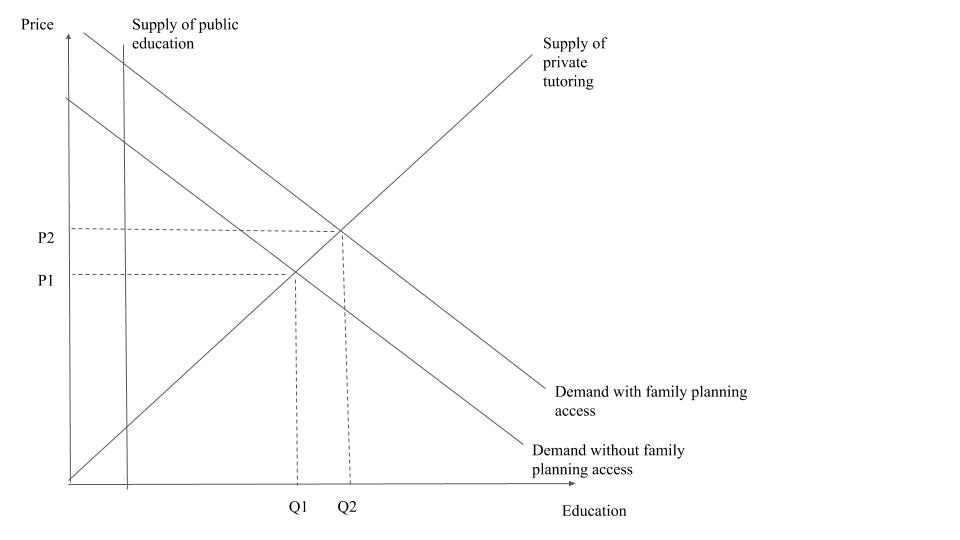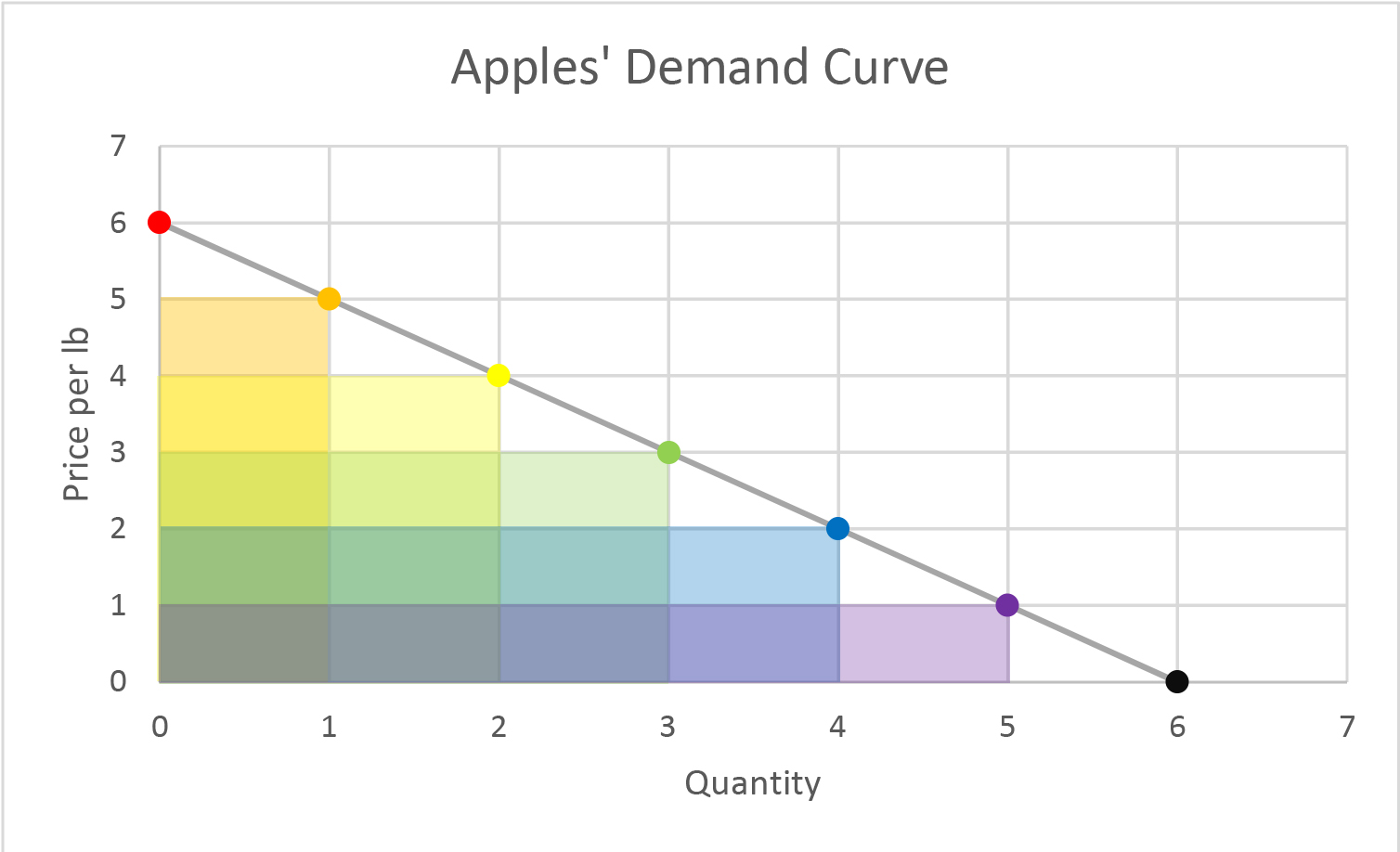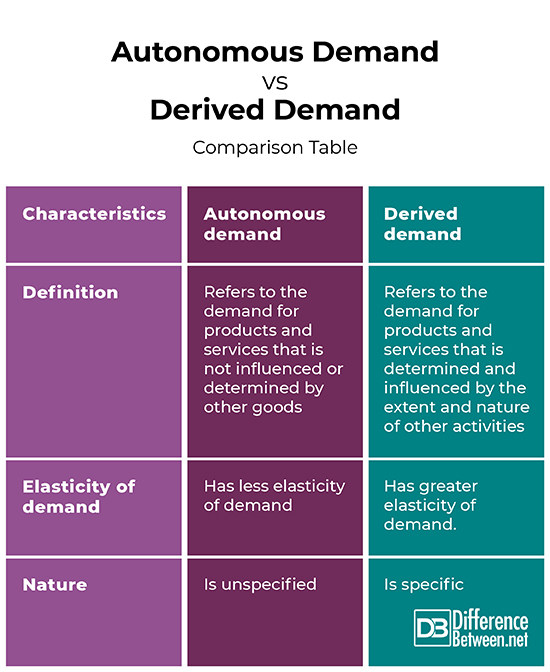Difference Between Autonomous Demand and Derived Demand
The demand for products and services differs in different situations. Demand may be classified based on the usage of a product, nature of a product, product’s suppliers and the number of consumers. There are different types of demand including individual and market-based demand, industry and organization demand, autonomous and derived demand, demand for durable and perishable products and short-term and long-demand. In this article, we will look at the differences between autonomous demand and derived demand.

What is Autonomous Demand?
This is the demand for products and services that is not influenced or determined by other goods. As such, the demand for these products arises due to the physical, biological and other personal needs of consumers.
Though a rare occurrence, it arises due to individuals’ desire to consume certain products. For instance, the demand for basic needs such as food, shelter, and clothing as well as other personal goods such as vehicles is autonomous.

What is Derived Demand?
This is the demand for products and services that is determined and influenced by the extent and nature of other activities. For instance, in ongoing construction, iron and cement are examples of derived demand.
Another example is the demand for diesel or petrol based on the usage of vehicles. Also, raw materials required in the production of a product, complementary goods and substitutes often result in derived demand.
Similarities between Autonomous demand and Derived demand
- Both refer to the demand of products and services
Differences between Autonomous demand and Derived demand
Definition
Autonomous demand refers to the demand for products and services that is not influenced or determined by other goods. On the other hand, derived demand refers to the demand for products and services that is determined and influenced by the extent and nature of other activities.
Elasticity of demand
While autonomous demand has less elasticity of demand, derived demand has greater elasticity of demand.
Nature
Autonomous demand is unspecified. On the other hand, derived demand is specific.
Autonomous demand vs. Derived demand: Comparison Table

Summary of Autonomous demand and Derived demand
Autonomous demand refers to the demand for products and services that is not influenced or determined by other goods. Examples of autonomous demand include basic needs such as food, shelter, and clothing as well as other personal goods such as vehicles. On the other hand, derived demand refers to the demand for products and services that is determined and influenced by the extent and nature of other activities. Examples of derived demand include the demand for diesel or petrol based on the usage of vehicles, raw materials required in the production of a product, complementary and substitute goods.
- Difference Between Profit Center and Investment Center - July 2, 2022
- Difference Between Anti-Trust and Anti-Competition - June 6, 2022
- Difference Between Stocktaking and Stock Control - June 6, 2022
Search DifferenceBetween.net :
 Email This Post
: If you like this article or our site. Please spread the word. Share it with your friends/family.
Email This Post
: If you like this article or our site. Please spread the word. Share it with your friends/family.
2 Comments
Leave a Response
References :
[0]SARASWATHI S. & Reddy M. MANAGERIAL ECONOMICS AND FINANCIAL ACCOUNTING. PHI Learning Pvt. Ltd., 2007. https://books.google.co.ke/books?id=v0-1_i790GYC&pg=PA62&dq=Difference+between+autonomous+demand+and+derived+demand&hl=en&sa=X&ved=2ahUKEwjWp5eWgfDsAhU2ShUIHQNQCjwQ6AEwAHoECAEQAg#v=onepage&q=Difference%20between%20autonomous%20demand%20and%20derived%20demand&f=false
[1]SARASWATHI S. & Reddy M. MANAGERIAL ECONOMICS AND FINANCIAL ACCOUNTING. PHI Learning Pvt. Ltd., 2007. https://books.google.co.ke/books?id=v0-1_i790GYC&pg=PA62&dq=Difference+between+autonomous+demand+and+derived+demand&hl=en&sa=X&ved=2ahUKEwjWp5eWgfDsAhU2ShUIHQNQCjwQ6AEwAHoECAEQAg#v=onepage&q=Difference%20between%20autonomous%20demand%20and%20derived%20demand&f=false
[2]Ramachandra. Econ., Acc., And Man For Jntu. Tata McGraw-Hill Education, 2006.https://books.google.co.ke/books?id=7vOChFmbNLYC&pg=SA2-PA6&dq=Difference+between+autonomous+demand+and+derived+demand&hl=en&sa=X&ved=2ahUKEwjWp5eWgfDsAhU2ShUIHQNQCjwQ6AEwBnoECAUQAg#v=onepage&q=Difference%20between%20autonomous%20demand%20and%20derived%20demand&f=false
[3]Aryasri. Managerial Economics And Financial Analysis. Tata McGraw-Hill Education. https://books.google.co.ke/books?id=QSEjlvVMqhYC&pg=SA2-PA6&dq=Difference+between+autonomous+demand+and+derived+demand&hl=en&sa=X&ved=2ahUKEwjWp5eWgfDsAhU2ShUIHQNQCjwQ6AEwBXoECAIQAg#v=onepage&q=Difference%20between%20autonomous%20demand%20and%20derived%20demand&f=false
[4]Image credit: https://commons.wikimedia.org/wiki/File:Demand_and_supply_of_Education.jpg
[5]Image credit: https://commons.wikimedia.org/wiki/File:Demand_Curve_for_Apples.jpg


Very educative site indeed!
Appreciative for the knowledge acquired from here.